Mercury cyanide

Mercury cyanide structure
|
Common Name | Mercury cyanide | ||
|---|---|---|---|---|
| CAS Number | 592-04-1 | Molecular Weight | 252.62500 | |
| Density | 4.00 g/cm3 (20 ºC) | Boiling Point | N/A | |
| Molecular Formula | C2HgN2 | Melting Point | 320 ºC (decomp) | |
| MSDS | Chinese USA | Flash Point | N/A | |
| Symbol |



GHS06, GHS08, GHS09 |
Signal Word | Danger | |
| Name | mercury dicyanide |
|---|---|
| Synonym | More Synonyms |
| Density | 4.00 g/cm3 (20 ºC) |
|---|---|
| Melting Point | 320 ºC (decomp) |
| Molecular Formula | C2HgN2 |
| Molecular Weight | 252.62500 |
| Exact Mass | 253.97700 |
| PSA | 47.58000 |
| LogP | 0.03106 |
| Appearance of Characters | Fine Crystalline Powde |
| Index of Refraction | 1.645 |
| InChIKey | FQGYCXFLEQVDJQ-UHFFFAOYSA-N |
| SMILES | N#C[Hg]C#N |
| Storage condition | Poison room |
| Water Solubility | g/100g solution H2O: 6.31 (0°C) |
Synonym: Mercuric cyanide. SECTION 2 - COMPOSITION, INFORMATION ON INGREDIENTS
Risk Phrases: 26/27/28 33 SECTION 3 - HAZARDS IDENTIFICATION EMERGENCY OVERVIEW Very toxic by inhalation, in contact with skin and if swallowed. Danger of cumulative effects.Hygroscopic (absorbs moisture from the air).Light sensitive. Potential Health Effects Eye: Exposure to mercury or mercury compounds can cause discoloration on the front surface of the lens, which does not interfere with vision. Causes eye irritation and possible burns. Skin: Causes skin irritation and possible burns.
Ingestion: May be fatal if swallowed. Causes gastrointestinal irritation with nausea, vomiting and diarrhea. Metabolism may release cyanide, which may result in headache, dizziness, weakness, collapse, unconsciousness and possible death. Inorganic mercury compounds may cause central and peripheral nervous system effects. Inhalation: Causes respiratory tract irritation with possible burns. Acute exposure to high concentrations of mercury vapors may cause severe respiratory tract irritation. Chronic: Chronic ingestion may cause accumulation of mercury in body tissues. Chronic exposure to mercury compounds may produce immunologic glomerular disease. Chronic exposure to cyanide solutions may lead to the development of a "cyanide" rash, characterized by itching, and by macular, papular, and vesicular eruptions, and may be accompanied by secondary infections. SECTION 4 - FIRST AID MEASURES Eyes: Immediately flush eyes with plenty of water for at least 15 minutes, occasionally lifting the upper and lower eyelids. Get medical aid immediately. Skin: Get medical aid immediately. Immediately flush skin with plenty of water for at least 15 minutes while removing contaminated clothing and shoes. Wash clothing before reuse. Ingestion: If victim is conscious and alert, give 2-4 cupfuls of milk or water. Never give anything by mouth to an unconscious person. Get medical aid immediately. Inhalation: Get medical aid immediately. Remove from exposure and move to fresh air immediately. If not breathing, give artificial respiration. If breathing is difficult, give oxygen. Notes to Physician: SECTION 5 - FIRE FIGHTING MEASURES General Information: As in any fire, wear a self-contained breathing apparatus in pressure-demand, MSHA/NIOSH (approved or equivalent), and full protective gear. During a fire, irritating and highly toxic gases may be generated by thermal decomposition or combustion. Extinguishing Media: Use agent most appropriate to extinguish fire. Use water spray, dry chemical, carbon dioxide, or appropriate foam. SECTION 6 - ACCIDENTAL RELEASE MEASURES General Information: Use proper personal protective equipment as indicated in Section 8. Spills/Leaks: Clean up spills immediately, observing precautions in the Protective Equipment section. Sweep up or absorb material, then place into a suitable clean, dry, closed container for disposal. Avoid generating dusty conditions. Provide ventilation. SECTION 7 - HANDLING and STORAGE Handling: Wash thoroughly after handling. Use only in a well-ventilated area. Avoid contact with eyes, skin, and clothing. Avoid ingestion and inhalation. Store protected from light. Avoid mechanical shock and friction. Storage: Store in a cool, dry, well-ventilated area away from incompatible substances. Poison room locked. Keep containers tightly closed. Store protected from light. SECTION 8 - EXPOSURE CONTROLS, PERSONAL PROTECTION Engineering Controls: Use adequate general or local exhaust ventilation to keep airborne concentrations below the permissible exposure limits. Exposure Limits CAS# 592-04-1: United States OSHA: 5 mg/m3 TWA (listed under Cyanide anion).0.1 mg/m3 Ceiling (listed under Mercury, aryl and inorganic compound Belgium - TWA: (listed as mercury inorganic compounds): 0.025 mg/ VLE (as Hg) France - VME: (listed as mercury inorganic compounds): 0.1 mg/m3 (as Hg) Germany: (listed as mercury inorganic compounds): 0.1 mg/m3 VME ( Hg) Germany: (listed as mercury inorganic compounds): Skin absorber Malaysia: (listed as mercury, aryl and inorganic compounds): 0.1 mg/m3 TWA (as Hg) Netherlands: (listed as mercury inorganic compounds): 0.15 mg/m3 Netherlands: (listed as mercury inorganic compounds): 0.05 mg/m3 Russia: (listed as mercury inorganic compounds): 0.2 mg/m3 TWA (a Hg) Russia: (listed as mercury inorganic compounds): 0.05 mg/m3 STEL Hg) Spain: (listed as mercury inorganic compounds): 0.025 mg/m3 VLA-E (as Hg) Personal Protective Equipment Eyes: Wear appropriate protective eyeglasses or chemical safety goggles as described by OSHA's eye and face protection regulations in 29 CFR 1910.133 or European Standard EN166. Skin: Wear appropriate protective gloves to prevent skin exposure. Clothing: Wear appropriate protective clothing to prevent skin exposure. Respirators: Follow the OSHA respirator regulations found in 29 CFR 1910.134 or European Standard EN 149. Use a NIOSH/MSHA or European Standard EN 149 approved respirator if exposure limits are exceeded or if irritation or other symptoms are experienced. SECTION 9 - PHYSICAL AND CHEMICAL PROPERTIES Physical State: Crystals Color: white Odor: odorless pH: Not available. Vapor Pressure: Not available. Viscosity: Not available. Boiling Point: Not available. Freezing/Melting Point: Not available. Autoignition Temperature: Not available. Flash Point: 320 deg C ( 608.00 deg F) Explosion Limits, lower: Not available. Explosion Limits, upper: Not available. Decomposition Temperature: 320 deg C Solubility in water: Soluble. Specific Gravity/Density: 3.996 Molecular Formula: C2HgN2 Molecular Weight: 252.63 SECTION 10 - STABILITY AND REACTIVITY Chemical Stability: Stable under normal temperatures and pressures. Friction and impact sensitive explosive. Conditions to Avoid: Incompatible materials, light, friction. Incompatibilities with Other Materials: Strong oxidizing agents, acids. Hazardous Decomposition Products: Hydrogen cyanide, nitrogen oxides, carbon monoxide, carbon dioxide, mercury/mercury oxides. Hazardous Polymerization: Has not been reported. SECTION 11 - TOXICOLOGICAL INFORMATION RTECS#: CAS# 592-04-1: OW1515000 LD50/LC50: CAS# 592-04-1: Oral, mouse: LD50 = 33 mg/kg; Oral, rat: LD50 = 26 mg/kg. Carcinogenicity: Mercury(II) cyanide - Not listed by ACGIH, IARC, or NTP. Other: See actual entry in RTECS for complete information. SECTION 12 - ECOLOGICAL INFORMATION SECTION 13 - DISPOSAL CONSIDERATIONS Dispose of in a manner consistent with federal, state, and local regulations. SECTION 14 - TRANSPORT INFORMATION IATA Shipping Name: MERCURY CYANIDE Hazard Class: 6.1 UN Number: 1636 Packing Group: II IMO Shipping Name: MERCURY CYANIDE Hazard Class: 6.1 UN Number: 1636 Packing Group: II RID/ADR Shipping Name: MERCURIC CYANIDE Hazard Class: 6.1 UN Number: 1636 Packing group: II USA RQ: CAS# 592-04-1: 1 lb final RQ; 0.454 kg final RQ SECTION 15 - REGULATORY INFORMATION European/International Regulations European Labeling in Accordance with EC Directives Hazard Symbols: T+ Risk Phrases: R 26/27/28 Very toxic by inhalation, in contact with skin and if swallowed. R 33 Danger of cumulative effects. Safety Phrases: S 13 Keep away from food, drink and animal feeding stuffs. S 28A After contact with skin, wash immediately with plenty of water. S 36 Wear suitable protective clothing. S 45 In case of accident or if you feel unwell, seek medical advice immediately (show the label where possible). WGK (Water Danger/Protection) CAS# 592-04-1: 3 Canada CAS# 592-04-1 is listed on Canada's NDSL List. CAS# 592-04-1 is listed on Canada's Ingredient Disclosure List. US FEDERAL TSCA CAS# 592-04-1 is listed on the TSCA inventory. SECTION 16 - ADDITIONAL INFORMATION MSDS Creation Date: 7/16/1998 Revision #3 Date: 1/18/2005 The information above is believed to be accurate and represents the best information currently available to us. However, we make no warranty of merchantability or any other warranty, express or implied, with respect to such information, and we assume no liability resulting from its use. Users should make their own investigations to determine the suitability of the information for their particular purposes. In no way shall the company be liable for any claims, losses, or damages of any third party or for lost profits or any special, indirect, incidental, consequential or exemplary damages, howsoever arising, even if the company has been advised of the possibility of such damages. SECTION 16 - ADDITIONAL INFORMATION N/A |
CHEMICAL IDENTIFICATION
HEALTH HAZARD DATAACUTE TOXICITY DATA
|
| Symbol |



GHS06, GHS08, GHS09 |
|---|---|
| Signal Word | Danger |
| Hazard Statements | H300 + H310 + H330-H373-H410 |
| Supplemental HS | Contact with acids liberates very toxic gas. |
| Precautionary Statements | P260-P280-P301 + P310 + P330-P302 + P352 + P310-P304 + P340 + P310-P403 + P233 |
| Personal Protective Equipment | dust mask type N95 (US);Eyeshields;Faceshields;Gloves;type P2 (EN 143) respirator cartridges |
| Hazard Codes | T+,N |
| Risk Phrases | 26/27/28-32-50/53 |
| Safety Phrases | 7-28-29-45-60-61 |
| RIDADR | UN 1636 6.1/PG 2 |
| WGK Germany | 3 |
| RTECS | OW1515000 |
| Packaging Group | II |
| Hazard Class | 6.1(a) |
| HS Code | 2837199090 |
|
~% 
Mercury cyanide CAS#:592-04-1 |
| Literature: Pharm. Ztg., , vol. 75, p. 14 Chem. Zentralbl., , vol. 101, # II p. 1971 |
|
~% 
Mercury cyanide CAS#:592-04-1 |
| Literature: Journal de Pharmacie et de Chimie, , vol. 3, p. 218 - 227 Hg: MVol.B2, 73, page 549 - 551 |
|
~% 
Mercury cyanide CAS#:592-04-1 |
| Literature: Chem. Zentralbl., , vol. 79, # II p. 773 |
|
~% 
Mercury cyanide CAS#:592-04-1 |
| Literature: Zeitschrift fuer Anorganische und Allgemeine Chemie, , vol. 352, p. 67 - 76 B: B-Verb.4, 3.3, page 51 - 64 |
|
~% 
Mercury cyanide CAS#:592-04-1 |
| Literature: Journal of the American Chemical Society, , vol. 45, p. 1534 |
|
~% 
Mercury cyanide CAS#:592-04-1 |
| Literature: Atti della Accademia Nazionale dei Lincei, Classe di Scienze Fisiche, Matematiche e Naturali, Rendiconti, , vol. <8> 26, p. 428 |
| Precursor 5 | |
|---|---|
| DownStream 10 | |
| HS Code | 2837199090 |
|---|
|
Mechanisms of absorption of inorganic mercury from rat small intestine. III. Comparative absorption studies of inorganic mercuric compounds in vitro.
Pharmacol. Toxicol. 66(5) , 347-53, (1990) The transport of various inorganic mercuric compounds (HgX2s) was compared in everted intestinal sacs and intestinal brush border membrane vesicles (BBMV) of the rat. The preparations were incubated i... |
|
|
Cyanoglycosylation products of 17-O-acetyl-testosterone.
Carbohydr. Res. 310(4) , 239-52, (1998) 17-O-Acetyl testosterone, which has no susceptible hydroxyl or carboxyl group for glycosylation, was glycosylated with 2,3,4,6-tetra-O-acetyl-alpha-D-glucopyranosyl bromide in the presence of a mixed ... |
|
|
Synthesis and characterization of some anomeric pairs of per-O-acetylated aldohexopyranosyl cyanides (per-O-acetylated 2,6-anhydroheptononitriles). On the reaction of per-O-acetylaldohexopyranosyl bromides with mercuric cyanide in nitromethane.
Carbohydr. Res. 132(1) , 61-82, (1984) The synthesis and characterization of the anomeric pairs of the per-O-acetylaldohexopyranosyl cyanides of D-galactose, L-fucose, D-glucose, and D-mannose, as well as of 3,4,6-tri-O-acetyl-2-deoxy-2-ph... |
| Cianurina |
| Mercurius cyanatus |
| Mercury dicyanide |
| dicyanomercury |
| MERCURIC CYANIDE |
| Cyanure de mercure |
| Hydrargyrum cyanatum |
| Mercury cyanide |
| EINECS 209-741-6 |
| MFCD00011037 |


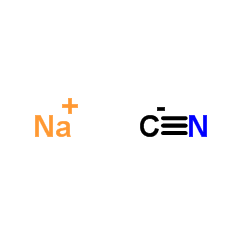
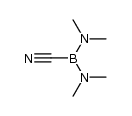
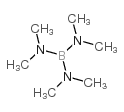


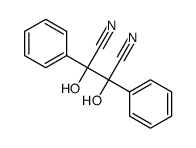
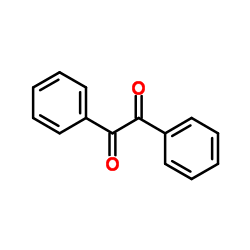

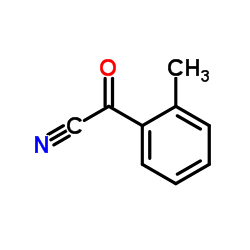 CAS#:5955-73-7
CAS#:5955-73-7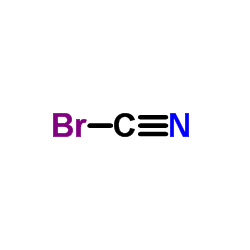 CAS#:506-68-3
CAS#:506-68-3 CAS#:506-77-4
CAS#:506-77-4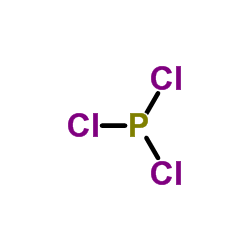 CAS#:7719-12-2
CAS#:7719-12-2 CAS#:506-64-9
CAS#:506-64-9 CAS#:506-78-5
CAS#:506-78-5 CAS#:353-85-5
CAS#:353-85-5 CAS#:286369-05-9
CAS#:286369-05-9 CAS#:30353-61-8
CAS#:30353-61-8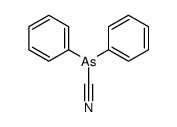 CAS#:23525-22-6
CAS#:23525-22-6